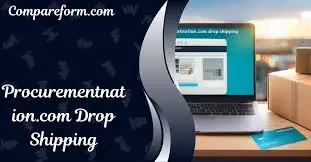Supply Chain: https://procurementnation.com/procurement-nation-com/

Supply chain optimization is crucial for reducing costs, enhancing service levels, and improving customer satisfaction. In today’s competitive market, businesses need effective procurement, production, logistics, and distribution processes. This article explores key strategies that can help businesses gain a competitive edge while maintaining efficiency across the supply chain. https://procurementnation.com/procurement-nation-com/
What is Supply Chain Optimization?
Supply chain optimization is the process of improving the efficiency of your supply chain, from sourcing raw materials to delivering products to customers. It involves using technology, data, and best practices to reduce costs, improve delivery times, and ensure customer satisfaction. Companies that optimize their supply chains can respond more effectively to market demands, avoid disruptions, and enhance overall productivity.
Effective Sourcing and Procurement
Sourcing and procurement are the starting points for any supply chain. Building strong relationships with multiple suppliers helps reduce dependency on any one source. This strategy increases resilience to disruptions, such as supply shortages or price fluctuations.
Building Strong Supplier Networks
Having diversified supplier networks allows businesses to maintain continuity in case of disruptions. Companies can source from different regions or industries, making it easier to pivot when needed.
Negotiation Tactics for Better Contracts
Effective negotiation ensures long-term partnerships. Businesses can lock in stable prices and ensure timely delivery by creating comprehensive contracts that cover critical supply needs.
Using Technology in Procurement
Procurement software helps businesses track purchases, manage supplier relationships, and automate ordering processes. This minimizes errors and makes data-driven decisions easier, boosting overall procurement efficiency.
Streamlining Manufacturing Processes
Once the materials are sourced, the next critical phase is manufacturing. Efficient production processes are essential for meeting customer demands and keeping costs low.
Lean Manufacturing Principles
Lean manufacturing is all about reducing waste. By focusing on value-added activities, companies can enhance productivity and cut costs. Waste reduction also leads to faster production times and higher-quality products.
Automation and Robotics
Using automation and robotics in manufacturing helps reduce labor costs while improving precision and speed. For instance, robotics can handle repetitive tasks, allowing human workers to focus on more complex roles, thus increasing overall productivity.
Continuous Improvement
Regularly evaluating your manufacturing process allows businesses to identify bottlenecks and implement continuous improvements. Tracking performance through key metrics ensures that operations remain efficient over time.
Logistics and Transportation Optimization
After production, efficient logistics and transportation ensure that products reach customers on time. Optimizing these processes reduces costs and enhances customer satisfaction.
Route Optimization
Using logistics software to optimize delivery routes reduces fuel consumption, shortens delivery times, and minimizes emissions. This is a win-win for both businesses and the environment.
Strong Carrier Relationships
Maintaining strong relationships with multiple carriers ensures flexibility during unexpected disruptions. Businesses can negotiate better rates and ensure reliable shipments, contributing to overall cost savings.
Just-In-Time (JIT) Inventory
JIT systems help businesses reduce storage costs by keeping minimal inventory and receiving goods only when needed. This strategy ensures that products are always available for production and delivery without the need for large warehouses.
Distribution and Enhancing Customer Experience
Distribution is the final stage in the supply chain. Efficient distribution ensures products reach customers quickly and in good condition, which directly affects customer satisfaction.
Warehouse Management
Optimizing warehouse management with real-time inventory tracking and automated picking processes reduces storage costs and improves delivery speed. An organized warehouse helps fulfill orders quickly and accurately.
Multi-Channel Distribution
Offering multiple distribution channels, such as e-commerce, retail stores, and direct-to-consumer models, widens market reach and allows businesses to meet different customer preferences.
Customer-Centric Approaches
Businesses that offer flexible shipping options, such as same-day delivery, cater to customer demands, leading to higher customer satisfaction. Tailoring services to what customers want ensures loyalty and repeat business.
Technological Innovations Shaping Supply Chains
Advances in technology have revolutionized supply chain management. Businesses can now use AI, machine learning, and blockchain to make their supply chains more efficient and transparent.
AI and Machine Learning
AI can predict demand patterns, manage inventory, and optimize logistics. For instance, AI-powered tools help businesses forecast future sales and adjust inventory levels accordingly.
Blockchain Technology
Blockchain offers transparency by creating an unchangeable record of every transaction in the supply chain. This increases trust between suppliers and consumers, reducing the risk of fraud.
Internet of Things (IoT)
IoT devices can track the real-time location and condition of products throughout the supply chain. This technology provides businesses with valuable insights into their operations, helping them make quick, informed decisions.
Sustainability in Supply Chain Management
Sustainability has become a critical focus for supply chain management. More consumers are choosing companies that adopt eco-friendly practices. Sustainable supply chains reduce environmental impact and can lower operational costs.
Reducing Carbon Footprints
Businesses can reduce their carbon footprints by using renewable energy, optimizing transportation routes, and minimizing waste. Sustainable practices not only benefit the environment but also reduce costs.
Ethical Sourcing
Ethical sourcing means ensuring that suppliers follow responsible labor practices and reduce environmental harm. Businesses with transparent, ethical supply chains are more likely to attract conscious consumers.
Circular Supply Chains
Incorporating a circular economy model allows businesses to recycle materials, reduce waste, and improve resource efficiency. This practice cuts costs and shows a commitment to sustainability.
Real-World Case Studies and Figures
Several businesses have successfully optimized their supply chains, resulting in significant cost savings and efficiency improvements:
- A leading electronics manufacturer reduced production costs by 15% using lean manufacturing and automation.
- A global retail brand improved delivery times by 30% after optimizing its logistics routes and adopting AI-powered forecasting tools.
- A food company lowered its carbon footprint by 25% by switching to renewable energy sources and reducing waste.
Conclusion
Supply chain optimization is essential for any business looking to stay competitive in today’s fast-paced market. By adopting advanced technologies, streamlining processes, and focusing on sustainability, businesses can improve efficiency, reduce costs, and enhance customer satisfaction. Visit this page https://procurementnation.com/procurement-nation-com/ The future of supply chain excellence lies in continuous innovation and a holistic approach to procurement, production, logistics, and distribution.
FAQs
What is supply chain optimization?
Supply chain optimization involves improving processes to reduce costs and enhance efficiency across the supply chain.
Why is lean manufacturing important?
Lean manufacturing helps businesses eliminate waste, improve productivity, and cut costs.
How does AI help in supply chain management?
AI predicts demand, manages inventory, and optimizes logistics, leading to more efficient operations.
What is Just-In-Time (JIT) inventory?
JIT inventory reduces storage costs by receiving goods only when needed for production or delivery.
How can companies reduce their carbon footprint in the supply chain?
Companies can reduce their carbon footprint by optimizing transportation, using renewable energy, and minimizing waste.






